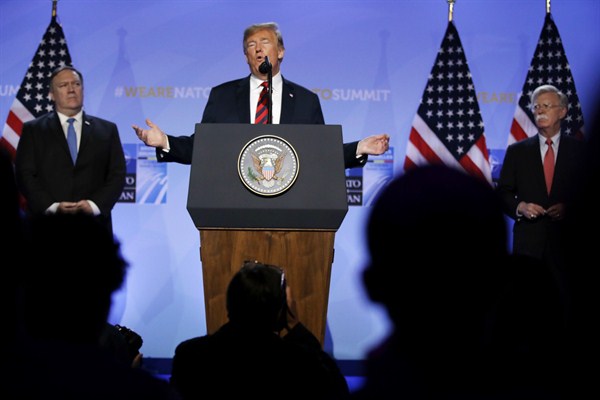It is as difficult as ever to understand the foreign and national security policy of U.S. President Donald Trump. While there are consistent themes and patterns, Trump’s approach to the world seems bereft of an overarching logic. In a very real sense, it is the first American strategy for decades not shaped by a discernible vision for world order.
Strategic vision first became important when the United States entered the fray of great power politics a century ago. Since Americans did not have a long tradition of involvement in global security affairs or natural enemies to guide them, strategic vision—a shared sense of what a safer, more prosperous world would look like—provided policymakers with a roadmap. Borrowing ideas from the domestic political system, America’s strategic vision was based on the idea that helping to build and sustain an international order would ultimately make the United States safer and more prosperous. Just as people are safer and more prosperous in a society than living on their own, nations are safer and more prosperous together. And just as any society requires leadership, so too the world order. Reluctantly at first and later with enthusiasm, the United States accepted that role.
Woodrow Wilson, while one of the most deeply flawed American presidents, first articulated a clear strategic vision. The central idea of his Fourteen Points was that a world order based on empires was inherently unstable; the solution was free trade and national self-determination. President Franklin Roosevelt then refined that into a vision based on great power cooperation to preserve peace after World War II, primarily through international law, international organizations and trade.

